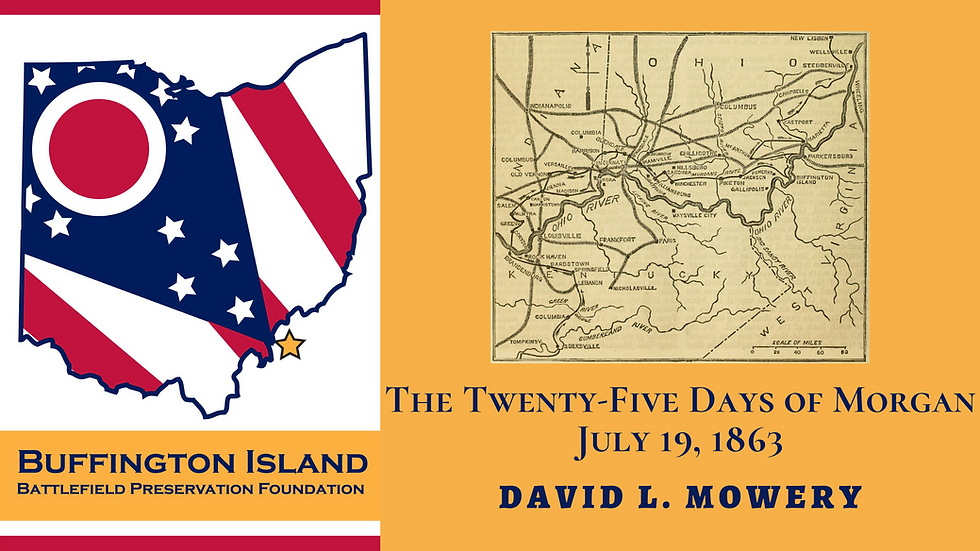The Impact of Water
- Darryl R. Smith

- Jun 16, 2022
- 2 min read
Updated: Apr 29
Where I sit in Ohio the heat and humidity have hit some all time highs, and I think about the summers of 1862 and 1863 and the droughts that were occurring in the Western Theater.* The heat and lack of water made the soldiers' lives miserable to a degree that we cannot fathom as we have access to water pretty much at any moment. But the drought over the summer of 1863 also played a part in the Battle of Buffington Island beyond simple thirst. As rivers and creeks were far below their normal flow, Morgan thought it would be easy, sans any Federal opposition, to re-cross the Ohio River. As we all know, weeks and months of little to no rain compact the soil, which in turn does not allow the soil to absorb water after a hard rain, causing runoff and flooding. The ford at Buffington Island, both in drought and normal weather conditions, would have been relatively easy to cross, but hard rains in the hills and mountains of Pennsylvania and West Virginia caused rapid runoffs, which in turn caused the Ohio River to rise quickly and flow more rapidly than normal. Had the Federal pursuit not been on the heels of Morgan's command, the Confederates could have made a slow and careful crossing - men were already repairing rafts and some of the Tennesseans had crossed over the Ohio. But the height and flow of the river would not allow Morgan's men the chance to cross after the opening of the battle, and the river conditions allowed for Federal gunboats to play a major part in preventing the Confederates from crossing, a situation that occur a few times during the raid. Denied this chance to cross at Buffington Ford, the Confederates were forced into a battle in which they suffered heavily.

Next time you are reaching for a bottle of water on a hot and humid day, think about how something as simple as water could be a major factor during the Civil War.
* The Western Theater is roughly defined as the region west of the Allegheny Mountains to the Mississippi River.



According to Robert E. Steacy's report titled "Time of Travel of Water in the Ohio River, Pittsburgh to Cincinnati" (Circular 439, U.S. Geological Survey, 1961), it takes 28 days (4 weeks) for water flowing at 30,000 cfs to flow the 466 miles down the Ohio River from Pittsburgh to Cincinnati. The Buffington Island Upper Ford is exactly 214 miles downstream of Pittsburgh. That is 46% of the way from Pittsburgh to Cincinnati. Taking that percentage and multiplying it times 28 days, that means it took roughly 13 days for the flood's "surge" to travel from Pittsburgh to Buffington Island. The large rainfall around Gettysburg occurred July 4-7. What's 13 days after that rain? It's July 17-20. Unbelievably bad timing for…
The rains that raised the level of the Ohio River at Buffington Island on July 18, 1863, to 6 feet deep (compared to 2.5 feet at normal summer depth) was the same deluge that soaked the Army of the Potomac and the Army of Northern Virginia during their movements after the Battle of Gettysburg, Pennsylvania (July 1-3, 1863). This week-long rain helped prevent the total destruction of Lee's army, but it destroyed Morgan's division in return.